
For this lesson, students work in pairs to search for the missing addend to complete a mathematical sentence.
- Subject:
- Mathematics
- Material Type:
- Lesson Plan
- Provider:
- Utah Education Network
- Author:
- Utah Education Network
- Date Added:
- 02/26/2019

For this lesson, students work in pairs to search for the missing addend to complete a mathematical sentence.

See Objective 2, Standard 2 on this site After talking about rules and laws that people are expected to follow at home, at school and in the community give students the Rules and Laws Foldable (template provided). They will fold it in half the long way and then unfold the paper and cut along the dotted lines to the fold. They should now have a three flap book. Have students draw or write 3 rules or laws that they have to follow for each area (home, school, community). This assessment activity comes from the lesson plan Rules and Laws, but can also be used independent from that lesson plan.
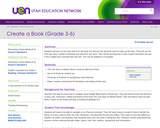
In this lesson, students will pick out the main theme for the book and discuss the elements used to make up the story. They will use the iPad App Story Creator to illustrate and write their own story. Students will learn how to take a paper illustration and put it into a digital story and add their own text. This can be adapted to 4-6 grades.
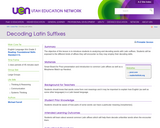
In this lesson, students analyze and decode words with Latin suffixes.
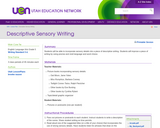
In this lesson, students incorporate sensory details into a piece of descriptive writing and improve a piece of writing by using precise and vivid language and word choice.

In this activity, students draw the position and shape of the moon in relation to other constant landmarks from the same location at home for 10 consectuive nights. After the tenth night, students answer questions based on their collected and analyzed data.
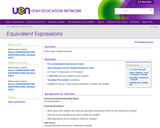
In this lesson, students solve single-variable equations by creating equivalent expressions.

This lesson plan is to help students identify good listening and talking skills. Three different kinds of communication are verbal, written, and non-verbal. These are basic skills for all lines of work. Students will identify and practice the skills necessary for effective communication including reading, listening, and non-verbal.

In this activity, students can discuss with a partner or write a paragraph to compare fossils in photographs. Students observe the visible structures in the rock to determine whether they look like something that is alive in the present day.

In this lesson, students will learn the concepts of goods, services and community. Homework: Interview an adult about his/her job. Two questions to be included in the interview are, ?What do you do at your job?? and ?How does it contribute to the community??

On this webpage, students look at photos of objects and predict which will require more force to overcome gravity. Students click on the pictures to self check their ideas. Next, students list objects from lightest to heaviest and check their answers by rolling the mouse over a highlighted box. Then, students organize the weight of foods in containers from lightest to heaviest on a chart and build their own spring scale to weigh items. Finally, students look at photos of trucks weighing differing amounts and predict which will take the most force to push up a hill. Links to video clips are provided for students to check predictions.

In this activity, students play catch with a friend and observe what happens to the ball. Students then click on links to watch short video clips of balls being thrown and dropped. After predicting what will happen, students watch video clips of different sized balls being dropped and compare the dropping rates. Students analyze their observations with provided questions.

In this activity, students investigate the force of gravity by tossing a balloon into the air and observing what happens as it comes down. Next, students blow on the balloon to keep it in the air and observe what happens. Finally, students climb a hill and watch a video clip showing a toy truck being pushed up a ramp to illustrate that a push or a pull is needed to overcome the force of gravity.

In this activity, students investigate the concept of light refraction by observing a penny before it is immersed in water and after immersion through the water. Students analyze their observations with provided questions and are asked to try the same activity with oil to replace the water and observe any differences.

On this webpage, students can read brief descriptions of how light travels (or cannot travel) through different objects, how light is refelected off of some objects, and how light is absorbed by some objects. Students can roll their mouse over each description to reveal an illustration.
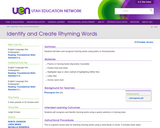
In this lesson, students will listen and recognize rhyming words using poetry or rhyming books.
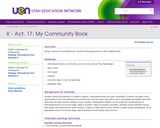
In this lesson, using a variety of informational text, students will explore places in their neighborhood.
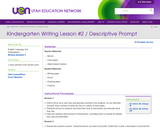
In this lesson, students write a description of themselves.

In this lesson, students learn to add multi-digit numbers.

This lesson uses shapes/symbols to represent a missing value in a mathematical equation.